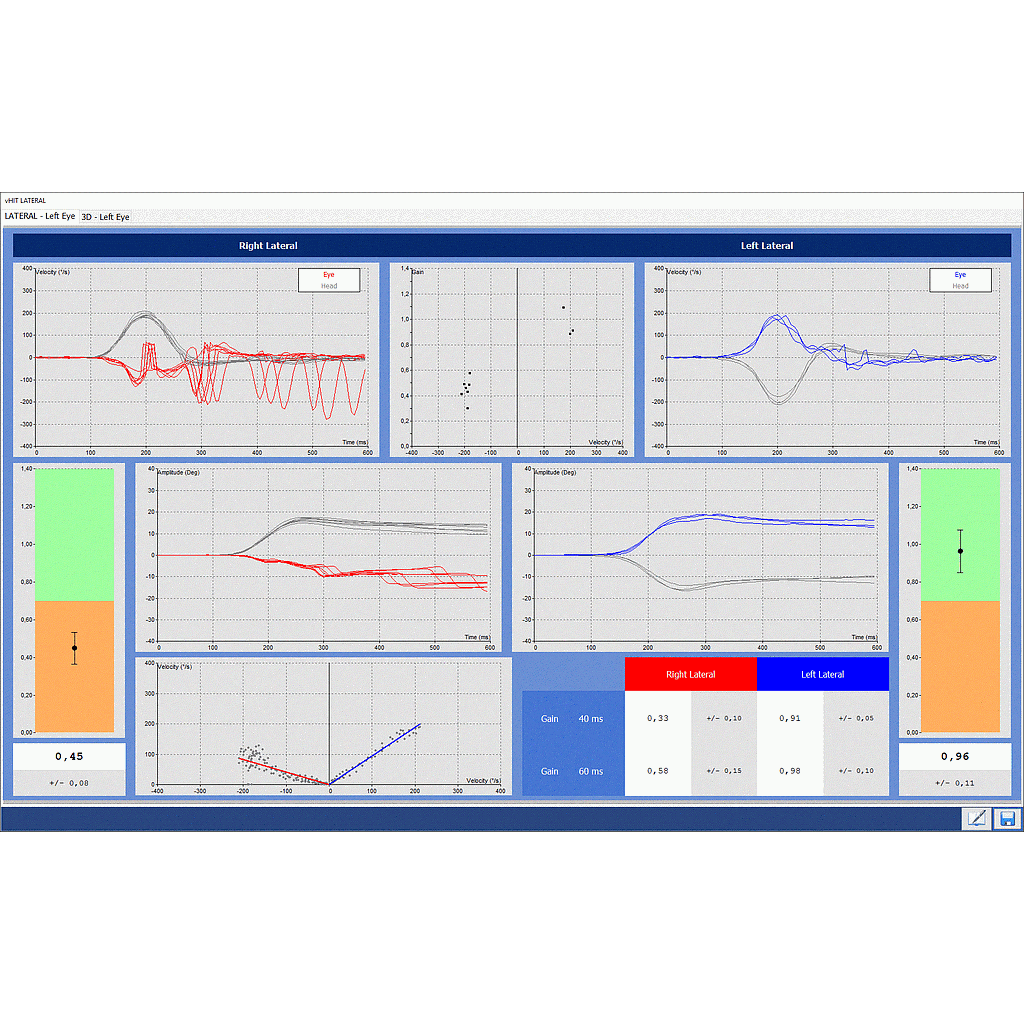DI 14050X-VHIT : Option for Headstar Video Head Impulse Test
DI 14050X-VHIT : Option for Headstar Video Head Impulse Test, on 6 semi-circular channels (Lateral, LARP, RALP). Option on Headstar only.
Software option : Video Head Impulse Test
The newest tool in the DIFRA VOR tool chest is Video Head Impulse Testing. The Head Impulse Test (HIT) has been used for years to identify vestibular deficit using unpredictable examiner applied, rapid horizontal head movements while observing compensatory catch up saccades indicative of a vestibular loss in the stimulated semicircular canal. Today, DIFRA has developed a high speed camera (250 Hz) with built-in 3D gyroscope and 3D accelerometer making much easier to measure VOR gain and record corrective saccades. Camera can be moved on the right or left eye and the software identifies automatically which eye is recorded. Very light and comfortable, our HeadStar has no sleepage problems, so we have no limitation for the maximum speed of the impulse compared to some competitors. The HeadStar can also be used as a regular monocular VNG system optionally due to the resolution of the camera (640x480 pixels). With the built-in 3D gyroscope, there is no need to change any part of the device between horizontal testing and anterior/posterior testing. An automatic detection of good head impulse is implemented in the software to help the user during testing. Video recording is also possible with a slow motion replay for each impulse.
Assess all six Semicircular Canals
Head Impulse test is the only test available to assess all six semicircular canals (lateral, anterior and posterior).
2D/3D analysis and normative data
View analysis in 2D or 3D. Both display a gain graph with built-in published normative data. A clear 3D picture facilitates easy identification of saccades. Comparison of test sessions allows for validation of vestibular rehabilitation success. Due to the sophisticated cameras smaller velocity head impulses of only 15 to 20 degrees are used, making the test more pleasant for the patient. Both overt and covert saccades can be detected allowing for proper diagnosis and rehabilitation recommendations.
